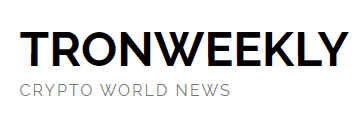You are here: Home / News / SEC Crypto Task Force Holds Crucial Meetings with Industry Leaders to Shape Stronger Framework

February 25, 2025 by Sheila
- SEC shifts from enforcement to collaboration, dropping high-profile cases in crypto space.
- Michael Saylor proposes a Bitcoin reserve strategy to tackle U.S. national debt.
- Crypto leaders push for clearer regulations to grow the market to $10 trillion.
The Securities and Exchange Commission (SEC) has initiated a series of meetings with prominent figures in the cryptocurrency sector. Representatives from the Crypto Council for Innovation (CCI), including Coinbase and OpenSea, convened with the it’s newly formed crypto task force on February 21, 2025. Strategy founder Michael Saylor and representatives from Robinhood participated in individual discussions with the Commission. The SEC shows its regulatory changes through meetings on its official website.
Established in January 2025 under acting Chair Mark Uyeda, the task force aims to craft a balanced regulatory framework. Hester Peirce, a Republican Commissioner, leads the initiative. Approximately 20 CCI members attended the Friday session, advocating for clearer guidelines on cryptocurrency classifications. Robinhood’s meeting on February 19 focused on actionable rulemaking, with Chief Legal Officer Dan Gallagher suggesting registration requirements and antifraud measures.
Michael Saylor Proposes Bitcoin Reserve Strategy
Michael Saylor presented a detailed plan to the task force on February 21, 2025, emphasizing a strategic Bitcoin reserve for the U.S. Treasury. His “Digital Assets Framework,” shared earlier on X in December 2024, categorizes digital assets into six types, including Bitcoin as a Digital Commodity. Saylor estimates this reserve could generate between $16 trillion and $81 trillion, addressing the $36.2 trillion national debt reported on February 5, 2025.
 Source: X
Source: XSaylor’s proposal also outlines roles for issuers, exchanges, and owners to ensure accountability. He suggests capping issuance costs at 1% of assets under management and annual compliance at 0.1%. At the meeting, he argued for both a structured framework and rights-based system that would make the United States the leader in digital economy markets while supporting wealth growth and maintaining dollar supremacy.
Shift in SEC’s Regulatory Approach
The SEC’s recent actions mark a departure from its enforcement-heavy stance under former Chair Gary Gensler. The agency has dropped several high-profile cases, including those against Coinbase, OpenSea, and Robinhood, as announced between February 21 and February 24, 2025. This shift follows years of criticism from the crypto industry, which labeled the SEC’s prior strategy as “regulation by enforcement.”
Stakeholders like Nasdaq and Paradigm have also engaged with the task force, pushing for tailored securities laws that accommodate digital assets’ unique traits. The CCI emphasized distinguishing stablecoins from securities, while Saylor’s taxonomy aims to clarify industry terms. As the SEC collaborates with innovators, it seeks to balance investor protection with growth, potentially transforming the $25 billion crypto market into a $10 trillion industry. These developments reflect a proactive effort to adapt regulation to an evolving financial landscape.

 6 months ago
54
6 months ago
54




 English (US) ·
English (US) ·